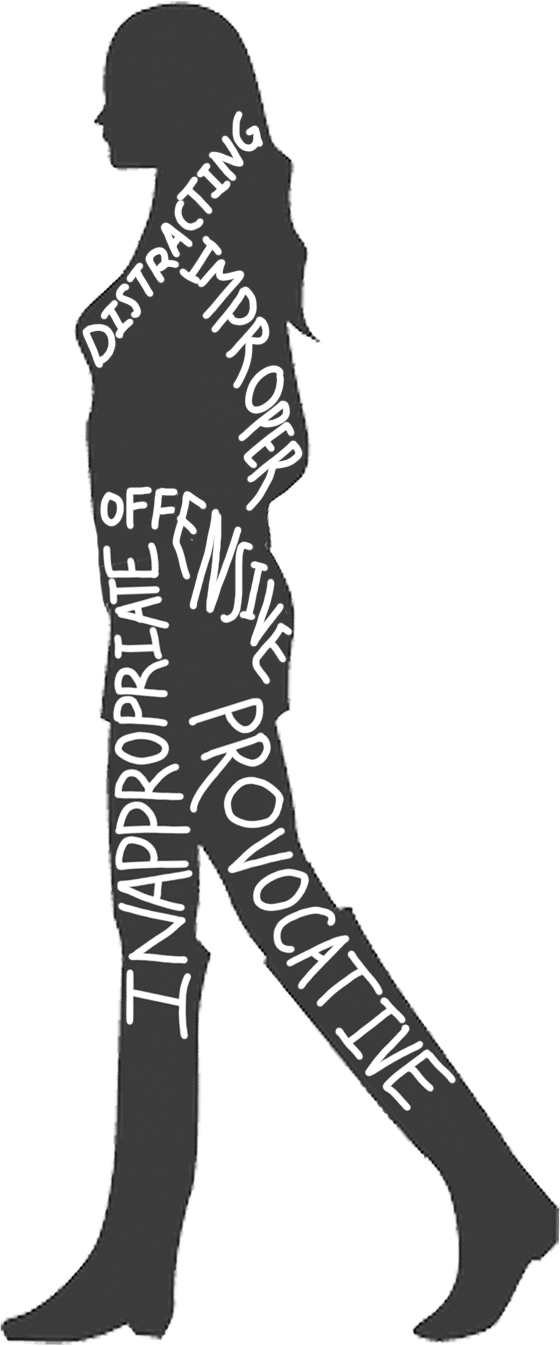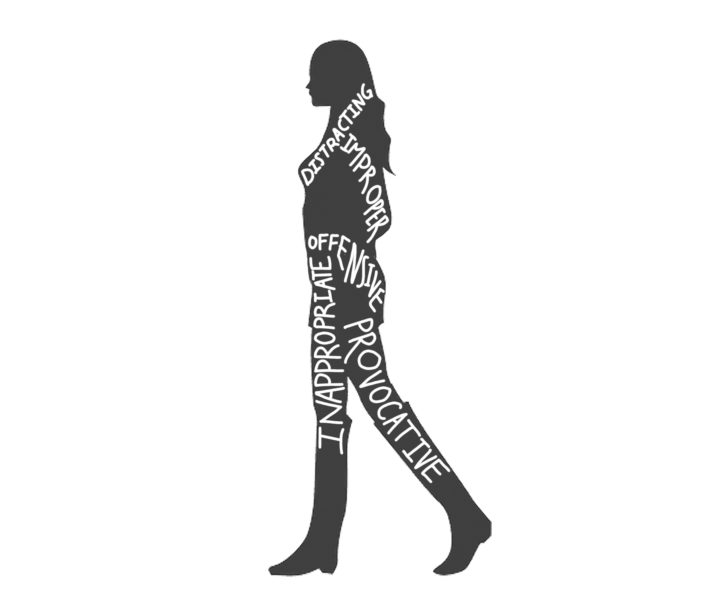

I was 13 years old, leaning against the counter at a crowded coffee shop, impatiently waiting for my name to be called. I was daydreaming, staring off into space, until a stranger suddenly approached me and yanked my sweater over my shoulders and chest.
I was more shocked than outraged, then immediately self conscious, wondering what it was about my collarbone and shoulders that she found so offensive.
Almost all girls have been shamed for what they choose to wear in one way or another. At a young age, they were made to believe that their bodies are inappropriate and that it is their responsibility as a woman to dress modestly.
Students are subject to such principles every day by school dress codes, which send a subtle, but harmful message to young girls: they are responsible for a boy’s behavior.
The Aragon High School Student and Parent Handbook from 2017-18, which bans “suggestive, revealing, or transparent attire that could divert attention from the learning process or may contribute to inappropriate conduct,” is a perfect example of this mindset. The issue is not the type of clothing that is banned. Rather, this statement implies girls are to blame for “diverting attention from the learning process” — in other words, it’s not the boy’s fault for disrupting class or acting inappropriately: it’s the girl’s fault for causing it.
“Dress codes … send a subtle, but harmful message to young girls: they are responsible for a boy’s behavior”
Not only are dress codes, which undoubtedly target girls, absurd and outdated — they are offensive to all genders. The notions that girls’ shoulders are sexual and male students are too easily distracted by exposed skin to focus on schoolwork, are simply untrue. And even if males were distracted by female attire, the act of dress coding is far more harmful: it’s staff singling out students and taking them out of class that disrupts a student’s ability to learn.
Dress codes are a symptom of a much larger issue. Labeling young girls’ bodies as inappropriate and teaching them that they are responsible for the male gaze contributes to a more broad concept known as “rape culture,” a sociological concept that argues rape is common and normalized because of more subtle sexist attitudes prevalent in everyday life. How do dress codes contribute to rape culture? The idea that male misbehavior is inevitable feeds into the constructed belief that “boys will be boys” — in other words, it normalizes and makes excuses for inappropriate comments and, in more extreme cases, sexual harassment.
The hypersexualization of body parts like collarbones, shoulders and knees leads to low self-esteem and teach es young girls to be embarrassed of their bodies; it teaches them that if they dress “provocatively,” they should expect inappropriate behavior.
Schools are not responsible for these larger sociological issues, as rape culture has existed for centuries. However, school dress codes play an important role. The way inappropriate comments and harassment are dealt with in schools set the tone for the workplace. And in a world where over 80 percent of women have experienced sexual harassment in some form or another, according to Stop Street Harassment, it becomes increasingly important to challenge the untrue and harmful notion that boys can’t control themselves and that girls are somehow responsible for this behavior.
Dress codes continue to exist because of misconception that they are needed to preserve order. In reality, dozens of studies have been unable to find a clear link between strict dress codes and rule-abiding.
If the goal of school dress codes is to decrease the likelihood of sexual harassment on campus, there have been multiple studies and reports that have disproved positive correlation between clothing and sexual harassment. A study done by the University of Texas found rapists were actually more likely to prey on women who dressed in “appropriate” clothes: heavy layers, long sleeves and long pants.
High schools around the country have already rewritten their outdated dress codes. Alameda High School has been recognized nationally for their new dress code, which allows students to wear whatever clothing they choose so long as it covers specific body parts. San Jose’s Unified High School District also adopted a similar policy. Neither school has experienced an increase in inappropriate behavior.
These new policies, which were created and promoted by Oregon’s National Organization for Women, create a common-sense dress code that addresses basic safety concerns (it does not allow gang attire or clothing depicting graphic violence), while being inclusive of all body types and across the entire gender spectrum.
Most young people are aware of these issues and are pushing for change. Aragon students are drafting letters to their administration, Burlingame students are signing petitions and San Mateo students are organizing protests. The dress code is harmful and has cost our students and teachers valuable class time. Our school district, which prides itself on prioritizing academics and providing an inclusive environment, should listen to the grievances of its students and create a dress code that is progressive and equitable.



